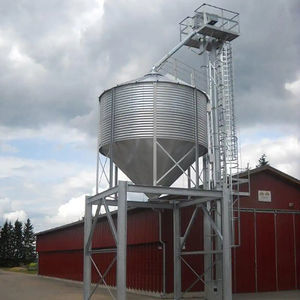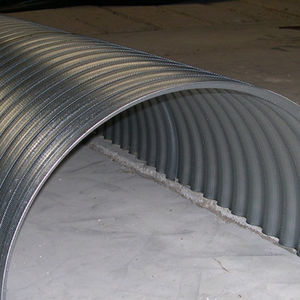

- Products
- Catalogs
- News & Trends
- Exhibitions
Grain silo OSgalvanised steelroundwith flat-bottom
Add to favorites
Compare this product
fo_shop_gate_exact_title
Characteristics
- Application
- for grain
- Material
- galvanised steel
- Form
- round, with flat-bottom
Description
The silo facilitates the proper storage of grain (wheat, corn, barley, rapeseed, rye, soya...), as it complies with hygiene and safety regulations. Steel silos protect grain against bad weather, pests and diseases. Silos enable humidity and temperature to be controlled, preserving grain quality over a long period. Flat storage is more vulnerable to pest infestation.
In this way, the silo preserves, and even improves, the quality of stored grain to meet market demands and regulatory requirements.
Silos outperform storage buildings in :
- Staff health and safety.
- Consumer health.
- Grain handling.
- Pest control.
- Respect for the environment.
- Allotment of grains.
Privé silos are cylindrical, as this is the optimum shape for distributing forces. Storage space is maximized at the top. Flat grain storage, on the other hand, requires more space, as the grains are distributed over a larger surface area.
Privé silos are made of galvanized steel to resist corrosion. With these materials, Privé silos are durable and inexpensive to maintain.
Silos are filled from the top using grain conveying equipment such as bucket elevators, augers and pulsed air.
Catalogs
VENTICÔNE ®
5 Pages
Exhibitions
Meet this supplier at the following exhibition(s):


Sommet de l'élevage 2025
7-10 Oct 2025 Clermont-Ferrand (France) Hall hall 1 - Stand F167
More information
*Prices are pre-tax. They exclude delivery charges and customs duties and do not include additional charges for installation or activation options. Prices are indicative only and may vary by country, with changes to the cost of raw materials and exchange rates.






